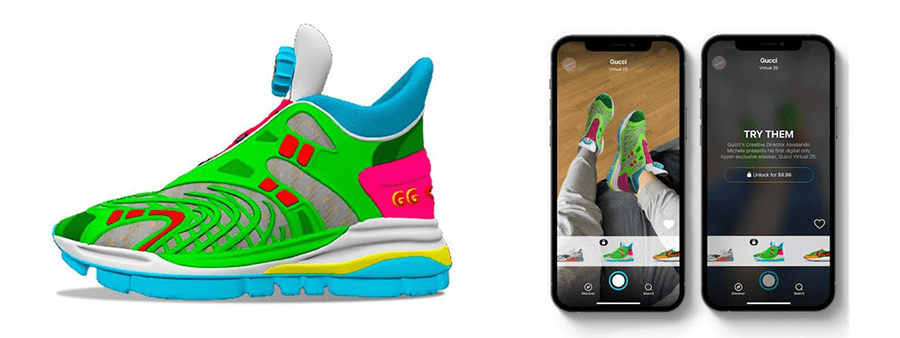Luxury fashion brands are targeting Gen Z with novel digital marketing strategies that meet this important group of consumers’ preferences throughout their journey from awareness to purchase, say Nanyang Business School’s Zhu Junming and Gemma Calvert.
For luxury fashion brands, Gen Z has become a crucial marketing target. Born between 1997 and 2012, they will soon become the largest cohort of global consumers. Although the majority of them are still at the entry level of luxury consumption, they are gradually joining the workforce and gaining economic autonomy. With rising purchasing power, they are estimated to make up 40% of the global luxury market by 2035.
Promising as it is, however, Gen Z is also a complicated generation. They are digital natives born with mobile devices and social media, and they desire uniqueness, novelty and interactive experiences. While luxury brands have been built around the notion of exclusivity, Gen Z are looking for more than an ostentatious product. It might be more difficult than ever to attract, engage and further convert them into customers but some strategies can move brands one step ahead by leveraging on the senses and psychology of Gen Z consumers.
Immersive unboxing videos
Heavy social media usage is synonymous with Gen Z, amongst which video content is particularly popular. Luxury fashion brands have been developing video content on social media for either brand accounts or influencers.
A recent trend has seen some influencers embedding ASMR (autonomous sensory meridian response) elements into unboxing videos for fashion products, which is called “immersive unboxing”. These videos enhance sounds from the unboxing process: opening the package, touching the fabrics, zipping and buckling up. By stimulating the sense of hearing, these videos provide an immersive and relaxing experience for consumers.
As well as providing strong product exposure, immersive unboxing videos hit consumers at the awareness stage, building up positive brand associations and product preference.
Gamification and the metaverse
Video games play a major part in Gen Z’s pastimes. They are highly engaging, immersive and interactive in nature, and those with a clear hierarchy can become players’ social currency, which gives them a sense of achievement and reasons to share.
Video games have therefore become a popular field for fashion brands, where they create an accessible challenge to connect with young consumers and embed brand elements to build brand perception and loyalty.
In the past few years, luxury fashion brands have not only partnered with mainstream online games but also launched their own games as part of their campaigns. In 2019, the collaboration between Louis Vuitton and League of Legends saw an exclusive skin design and a special trophy case in the game, as well as a capsule collection of clothing and accessories in real life.
In August 2021, Louis Vuitton released its own mobile game “LOUIS THE GAME”, inspired by its founder’s journey as a 14-year-old and to celebrate his 200th birthday.

Players can explore the company’s legacy in six different worlds and collect candles along their way, with 30 NFTs (non-fungible tokens) awaiting lucky collectors. The house hopes that the game will give young fans fresh insight into the brand’s history while showing off the innovation and creativity that it boasts.
From gamification and NFTs, we can obtain a glimpse of what the metaverse means to Gen Z consumers and luxury fashion brands. The desire for personal expression boosted Gen Z’s love for fashion and the metaverse provides them a hyper-interactive and creative digital environment to express themselves.
For Gen Z consumers, NFTs are a symbol of unique digital identity, while NFTs also fit in perfectly with luxury brands as they share the fundamentals of scarcity. That’s why although the metaverse is still in its infancy, some luxury fashion brands have been striving to gain first-mover advantage.
Apart from Louis Vuitton, 2021 also saw the Gucci Garden experience on Roblox and the collaboration between Balenciaga and Fortnite, all of which are extremely successful campaigns leading the digital transformation of the fashion industry.
Entry-level products
The oldest members of Gen Z have just entered the workforce in recent years. Considering their spending power, many luxury fashion brands have developed entry-level product lines to recruit young consumers, while the signature products serve as price anchors and set the luxury tone for the brand.
These entry-level products include perfumes, eyewear, small leather goods and other accessories, many of which feature novel designs with the brand's DNA. For most young consumers, these products are much more affordable compared with apparels and handbags, while still communicating strong brand identity and serving as entry tickets to an “exclusive brand club”. For fashion brands, these products provide high profit margins without damaging the luxury image.
Pre-empting the dominance of the metaverse, some brands have even started to create standalone virtual products. As with entry-level products, they allow young consumers to experience the brand at a lower cost while exclusivity could be secured by NFTs.
In March 2021, Gucci released a series of digital sneakers called “Virtual 25” at US$11.99 on Gucci APP. With the assistance of AR (augmented reality) technology, consumers were able to “try on” these digital-only sneakers while unlocking the same item in Roblox, providing for some novelty seekers their first experience with the brand.

Fashion mystery boxes
Mystery boxes are a recent trend among younger generations. As its name suggests, various items are randomly packed in sealed packages so no one knows what they will receive until they open the box.
From a consumer psychology perspective, the craze for mystery boxes can be explained by the release of dopamine (the brain’s feel-good chemical) in response to the anticipation or excitement of an unknown reward, essentially analogous to the brain’s response to gambling.
In the quest for rare super-bargains amidst the mystery of random items, Gen Z’s interest level in participating brands is piqued to perfection. For luxury fashion brands, the mystery box is a way to revive their inventories instead of cut-price sales and wasteful disposal, which not only prevents damaging profit margins or diluting brand value but is also in harmony with most Gen Z consumers who support sustainable brands.
Luxury mystery box startup, HEAT, has received investment from LVMH Ventures, the Hermès family and Stefano Ross (of OTB group), which highlights the luxury industry’s interest in this new business model.
The unpredictable trendsetters
Gen Z is continuously evolving and it is certain that luxury fashion brands are still on their way to fulfilling young consumers’ expectations.
Indeed, Gen Z’s preference for minimalism has prompted fashion brands to renew their brand aesthetics. Many brands have adopted a minimalist design approach to their websites to enhance the ease and exclusivity of their customers’ online experience.
Gen Z’s dedication to sustainability has led brands further into the business of fashion archives and vintage products, while the advocacy of diversity and inclusion is now blurring the boundary between menswear and womenswear.
As brands strive to win the hearts and minds of these unpredictable trendsetters, we can expect ever more creative campaigns and engaging consumer experiences from this sector.
With greater access to modern digital technologies, the market can look forward to an unprecedented immersive future for luxury fashion.

